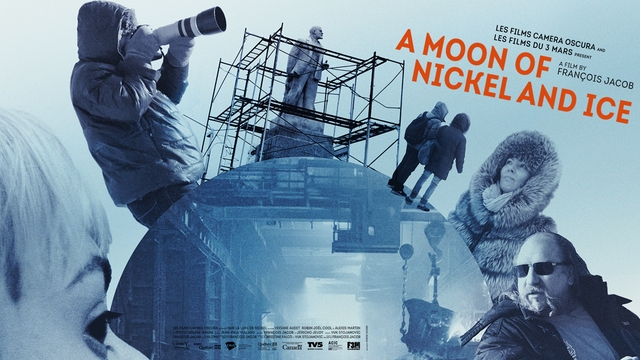The mining town of Norilsk sits in the heart of the Siberian Arctic, bathed in the billowing smoke and sulphur of its mills and factories. Built by Gulag prisoners under Stalin, Norilsk remains a mysterious place, haunted by its past suffering. While miners ponder lost comradeship and teenagers dream of escape, artists and descendants of the Gulag prisoners seek to shed light on Norilsk’s dark past, long since buried under the Siberian ice.
“If we wanted to pay our respects to the first builders, those who dug the mines, who extracted the nickel and copper, we would be looking for their tombs in vain. The eternal ice is their graveyard”, says Lev Aleksandrovich,
“Norilsk was a closed-off city. A prison city. It remains closed-off even today. It’s barely discussed, and its history is unknown”.
The extraction of nickel is the main purpose of the Siberian city of Norilsk, and has been since it was built by prisoners in the mid-1930s. Those forced to work there were intellectuals and patriots, confused by the harsh treatment they received from their beloved USSR. Barely a memory remains of those prisoners today; Norilsk Nickel has erased them from its past, replacing the truth with fables of eager new-comers.
“Without the company, there is no city. The company decides about everything here”, says a local man struggling against the authorities in a bid to reveal the truth.
Several of Norilsk’s inhabitants campaign for the revival of the city’s lost collective memory, using drawings from prisoners and evidence of mass graves to uncover a brutal history. They claim that
“without the past, we can’t move forward”. Others, such as the miners, are more interested in a return to the recent past. Gone are the Soviet Era days of financial stability and job security,
“now I have to choose between flying and drinking” complains one man.
The workers risk their lives on a daily basis, braving the physically and psychologically
“merciless environment” of the mines. Some plan to stay in Norilsk forever, and are grateful just to have a job that allows them to provide for their families. Many, however, are keen to leave. The youth are the most hopeful of escape, and are often the only ones who succeed in leaving the city. One teenager, an aspiring writer, compares her reality to Orwell’s 1984; another says that
“the city is in stagnation”. Soon after, a slogan sweeps across a digital screen in town, ironically reading
“Norilsk Nickel a world of opportunities”.
This documentary combines poignant moments of reflection with mundane daily activities; a group of men go swimming, people dance in a bar, teenagers listen to music and excitedly discuss moving to St Petersburg. This intimate look at life in Norilsk explores its harsh present, troubled past, and uncertain future.
Festivals

International Film Festiva Nyon – Official Selection

Open City Film Festival – Official Selection

Chicago International Film Festival – Official Selection
 The mining town of Norilsk sits in the heart of the Siberian Arctic, bathed in the billowing smoke and sulphur of its mills and factories. Built by Gulag prisoners under Stalin, Norilsk remains a mysterious place, haunted by its past suffering. While miners ponder lost comradeship and teenagers dream of escape, artists and descendants of the Gulag prisoners seek to shed light on Norilsk’s dark past, long since buried under the Siberian ice.
The mining town of Norilsk sits in the heart of the Siberian Arctic, bathed in the billowing smoke and sulphur of its mills and factories. Built by Gulag prisoners under Stalin, Norilsk remains a mysterious place, haunted by its past suffering. While miners ponder lost comradeship and teenagers dream of escape, artists and descendants of the Gulag prisoners seek to shed light on Norilsk’s dark past, long since buried under the Siberian ice.
 International Film Festiva Nyon – Official Selection
International Film Festiva Nyon – Official Selection
 Open City Film Festival – Official Selection
Open City Film Festival – Official Selection
 Chicago International Film Festival – Official Selection
Chicago International Film Festival – Official Selection




